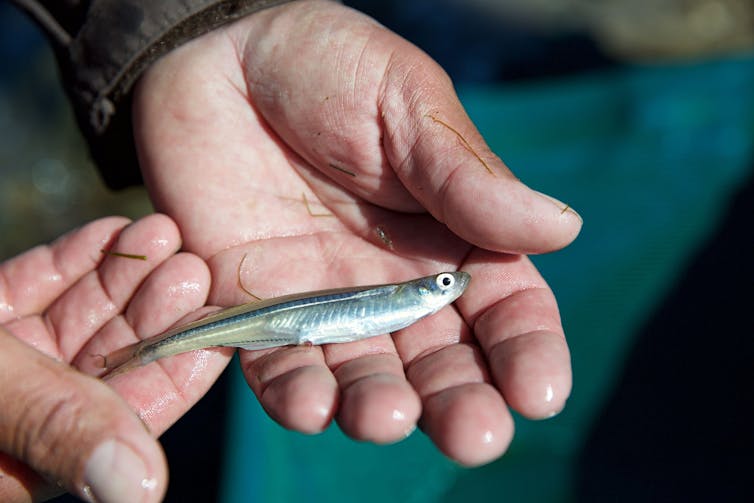Around 35% of the microplastics contaminating the world’s oceans come from washing our clothes. When washed, synthetic clothing sheds tiny plastic fragments (typically shorter than 5mm). Known as microfibres, these fragments are a common type of microplastic, and when released pose a serious threat to marine environments.
Due to their small size, microfibres can be easily ingested by marine animals. Research finds that exposure to microfibres can inhibit growth, disrupt reproduction and feeding and even cause death.
But the scale of microfibre pollution from laundry is poorly understood. The factors affecting microfibre discharge are complex, while these plastic fragments alone are not the only issue. Natural microfibres, such as cotton, are released from fabrics during washing and may also carry an environmental threat.
Yet current methods for measuring microfibre release are unreliable. A large number of studies have estimated the scale of microfibre pollution from domestic laundry. But they have obtained widely varying results. Each person in the UK, for example, could release anywhere between 5g and 2.14kg of microfibres each year.
But these estimates do not reflect the complex mechanisms through which microfibres are released during washing. Clothes are made from thousands of different fabrics and we all use different washing machines and cycles to clean them.
Using a gyrowash (a device that replicates a domestic washing machine in lab conditions), we studied the effect of different washing conditions on the microfibre footprint of domestic laundry. We found that UK laundry generates up to 17,847 tonnes of microfibres each year (243g per person), weighing the equivalent of around 1,500 double-decker buses.
Washing conditions
We found that increasing the wash temperature from 40℃ to 90℃ reduced microfibre release by 26%. At this temperature, the fibres become less brittle making them less susceptible to fragmentation.
Wash duration, however, had only a minor effect on microfibre release. We found no significant difference in the amount of microfibres released after 30 minutes and after an hour. This is likely to be because the majority of microfibres are held loosely in the fabric and are released early on in the washing cycle.
What had the most significant impact on microfibre release were the ratio of water to the size of the wash load and the level of abrasion between fabrics in the washing machine drum.
As clothes are tossed around in the wash, they collide with each other and the sides of the drum. Called agitation, this dislodges and breaks fibres in the fabric, allowing particles to wash out of the fabric structure. When we reduced the level of agitation but kept all other wash conditions constant, the release of microfibres reduced by over 50%.
We also found that more microfibres were released when the water to wash load ratio was higher. More than twice as much material was released from the fabric when this ratio was doubled. Increasing the flow of liquid through the fabric likely causes more fragments to be washed out of the fabric.
But these results were based on just one type of fabric – a polyester fleece. So we then tested more than 40 other types of fabric, all of which are used for clothing. These included cotton, viscose, polyester and several different blends.

Africa Studio/Shutterstock
Variation between fabrics
We found an exceptionally large variation in microfibre release between different fabrics. A polyester elastane mix, for example, released just 96g per person annually. By contrast, 100% polyester released 1.29 kg per person every year.
How tightly the yarn is twisted and whether the fabric was knitted or woven both influence microfibre release. More compact yarns and fabrics, such as those used in woven shirts, help to retain fibres and reduce the likelihood that microfibres are released. But yarns and fabrics that have an open structure, such as knitwear, are more likely to allow the release of microfibres from the fabric.
Fabrics that include a blend of natural fibres and other synthetic non-plastic fibres, such as viscose, also released significant amounts of microfibres when washed. This is important, as cotton fibres may take years (and often hundreds of years) to biodegrade. In 1990, intact cotton garments were retrieved from a shipwreck near the coast of North Carolina after 133 years underwater.
Natural microfibres may carry a threat to marine organisms, particularly in early life stages. Mysid shrimps and inland silverside fish are indicator species that live in river estuaries. Declining water quality can be monitored through changes in the behaviour or population of such species. Research reveals that exposure to cotton microfibres in salty water can cause reduced growth in mysid shrimps and can change the swimming behaviour of inland silversides.

Hum Images/Alamy Stock Photo
Doing your laundry responsibly
Any quantity of microfibres can be harmful to living organisms and their release should be avoided. But this is just one of a number of problems facing the fashion industry. For example, around 350,000 tonnes of clothing ends up in landfill in the UK each year. This is the same as every person in the UK throwing more than 5kg of their clothing in the bin.
Fast fashion: why your online returns may end up in landfill – and what can be done about it
But reducing the environmental impact of your laundry is relatively simple.
Only washing your clothes when they are dirty is a great start. But when you do your laundry, load your washing machine to two-thirds of the drum’s capacity. This will clean your clothes but will reduce the release of microfibres. However, you should bear in mind that overfilling a washing machine can reduce the quality of the wash.
We now have a reliable method for measuring microfibre pollution and a better understanding of the types of fabric and washing conditions that determine laundry’s environmental impact. But the problem is not purely about synthetic fibres. Some natural microfibres are equally hazardous and their impact is becoming increasingly apparent.




